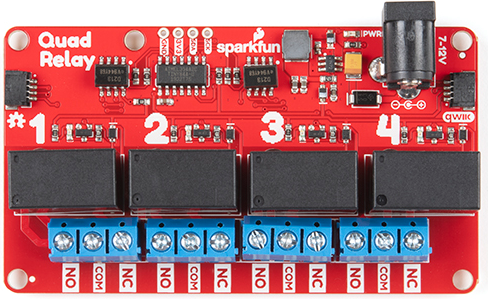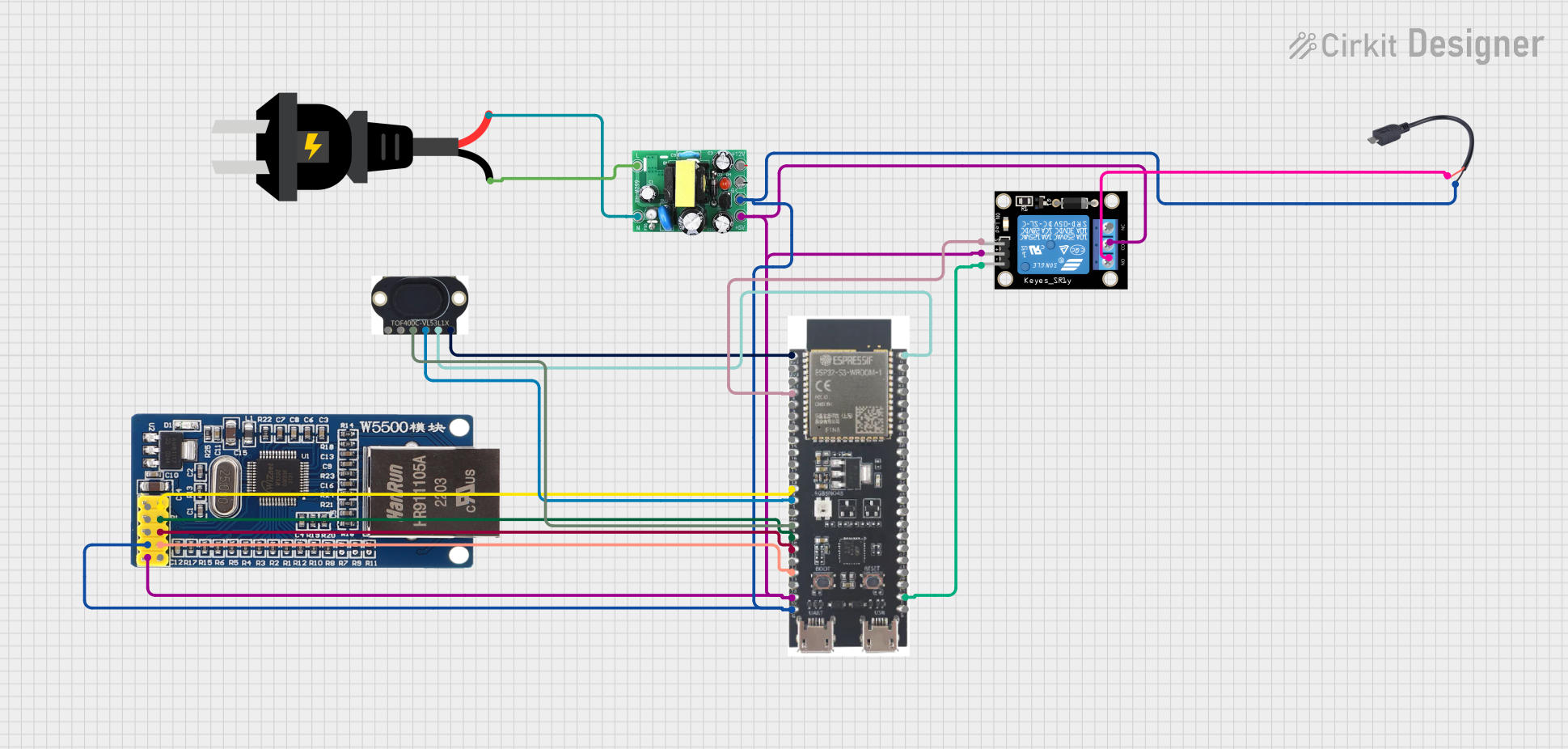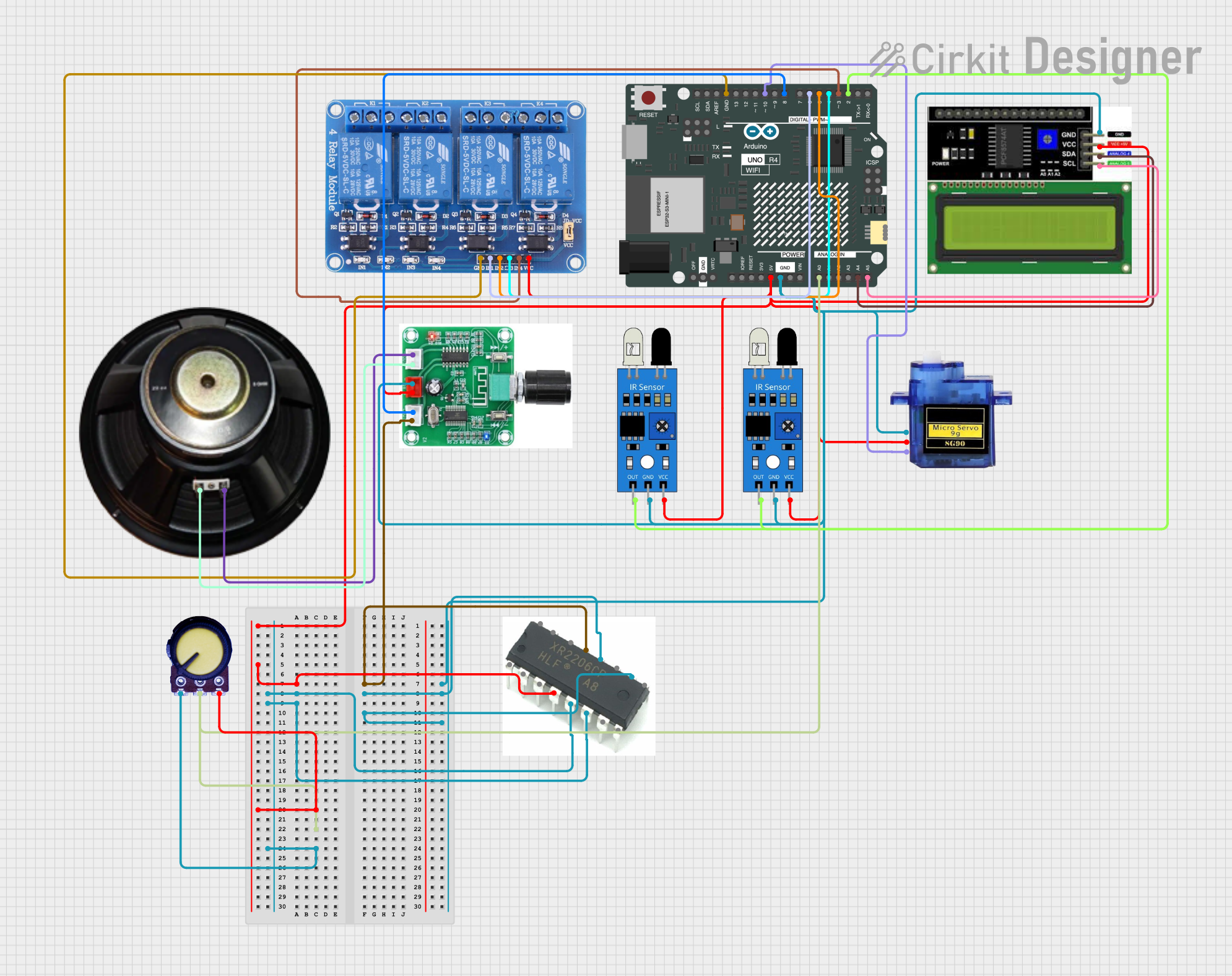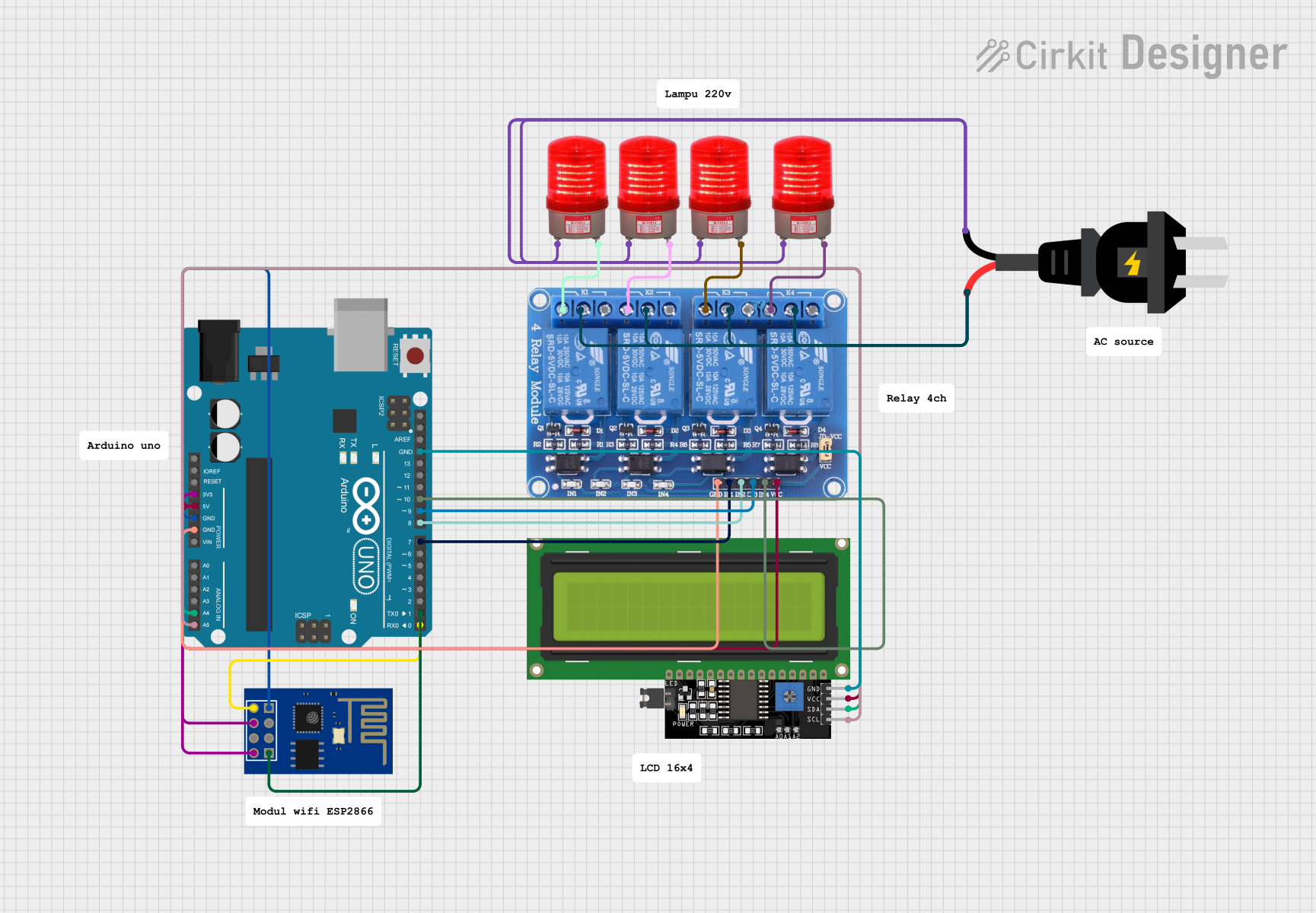
How to Use Qwiic Quad Relay Rev2: Examples, Pinouts, and Specs

 Design with Qwiic Quad Relay Rev2 in Cirkit Designer
Design with Qwiic Quad Relay Rev2 in Cirkit DesignerIntroduction
The Qwiic Quad Relay Rev2 by SparkFun is a versatile relay module designed to control high-power devices using low-power signals. It features four independent relays, each capable of switching up to 10A at 250VAC or 30VDC. The module is equipped with the Qwiic connect system, enabling seamless integration with other Qwiic-enabled devices without the need for soldering or complex wiring.
This module is ideal for applications such as:
- Home automation (e.g., controlling lights, fans, or appliances)
- Industrial control systems
- Robotics and IoT projects
- Prototyping and educational purposes
Explore Projects Built with Qwiic Quad Relay Rev2

 Open Project in Cirkit Designer
Open Project in Cirkit Designer
 Open Project in Cirkit Designer
Open Project in Cirkit Designer
 Open Project in Cirkit Designer
Open Project in Cirkit Designer
 Open Project in Cirkit Designer
Open Project in Cirkit DesignerExplore Projects Built with Qwiic Quad Relay Rev2

 Open Project in Cirkit Designer
Open Project in Cirkit Designer
 Open Project in Cirkit Designer
Open Project in Cirkit Designer
 Open Project in Cirkit Designer
Open Project in Cirkit Designer
 Open Project in Cirkit Designer
Open Project in Cirkit DesignerTechnical Specifications
Below are the key technical details of the Qwiic Quad Relay Rev2:
| Specification | Details |
|---|---|
| Operating Voltage | 3.3V to 5V |
| Relay Channels | 4 |
| Maximum Switching Voltage | 250VAC / 30VDC |
| Maximum Switching Current | 10A |
| Communication Interface | I2C (via Qwiic connector) |
| I2C Address Range | 0x6D (default) to 0x6F (configurable) |
| Dimensions | 2.70" x 2.10" (68.6mm x 53.3mm) |
| Mounting Holes | 4 (M3 screws) |
Pin Configuration and Descriptions
The Qwiic Quad Relay Rev2 features the following connectors and pins:
Qwiic Connector
| Pin | Description |
|---|---|
| SDA | I2C Data Line |
| SCL | I2C Clock Line |
| GND | Ground |
| 3.3V | Power Supply (3.3V) |
Relay Terminals
Each relay has three terminals for connecting external devices:
| Terminal | Description |
|---|---|
| COM | Common terminal for the relay |
| NO | Normally Open terminal (connected to COM when active) |
| NC | Normally Closed terminal (connected to COM when inactive) |
Usage Instructions
Connecting the Qwiic Quad Relay Rev2
- Power the Module: Connect the Qwiic Quad Relay to a 3.3V or 5V power source using the Qwiic connector.
- I2C Communication: Use the Qwiic cable to connect the module to a microcontroller (e.g., Arduino UNO with a Qwiic Shield).
- Relay Connections: Connect the devices you want to control to the relay terminals (COM, NO, NC) as per your application requirements.
Example: Using with Arduino UNO
Below is an example of how to control the Qwiic Quad Relay Rev2 using an Arduino UNO:
Wiring
- Attach a Qwiic Shield to the Arduino UNO.
- Connect the Qwiic Quad Relay to the Qwiic Shield using a Qwiic cable.
- Connect the devices to the relay terminals (e.g., a light bulb to COM and NO).
Code
#include <Wire.h>
// Default I2C address for Qwiic Quad Relay
#define RELAY_I2C_ADDRESS 0x6D
void setup() {
Wire.begin(); // Initialize I2C communication
Serial.begin(9600); // Start serial communication for debugging
// Turn on Relay 1
Wire.beginTransmission(RELAY_I2C_ADDRESS);
Wire.write(0x01); // Command to control relays
Wire.write(0x01); // Turn on Relay 1 (bit 0 = 1)
Wire.endTransmission();
Serial.println("Relay 1 is ON");
}
void loop() {
// Add your logic here to control relays dynamically
}
Important Considerations
- Power Supply: Ensure the power supply matches the voltage requirements of the module (3.3V or 5V).
- Load Ratings: Do not exceed the maximum voltage (250VAC/30VDC) or current (10A) ratings of the relays.
- Isolation: The relays provide electrical isolation between the control circuit and the high-power devices, but proper safety precautions should still be followed when working with high voltages.
Troubleshooting and FAQs
Common Issues
Relays Not Switching
- Cause: Insufficient power supply or incorrect I2C address.
- Solution: Verify the power supply voltage and ensure the I2C address matches the default (0x6D) or the configured address.
I2C Communication Failure
- Cause: Loose Qwiic cable connection or incorrect wiring.
- Solution: Check all Qwiic connections and ensure the SDA and SCL lines are properly connected.
Relay Clicking but No Output
- Cause: Incorrect wiring of the external device to the relay terminals.
- Solution: Double-check the connections to COM, NO, and NC terminals.
FAQs
Can I use this module with a 5V microcontroller?
- Yes, the Qwiic Quad Relay Rev2 is compatible with both 3.3V and 5V systems.
How do I change the I2C address?
- The I2C address can be changed by modifying the address jumpers on the back of the board. Refer to the SparkFun documentation for detailed instructions.
Is the module safe for high-voltage applications?
- Yes, the relays are rated for up to 250VAC. However, always follow proper safety guidelines when working with high voltages.
By following this documentation, you can effectively integrate and use the Qwiic Quad Relay Rev2 in your projects. For additional support, refer to the official SparkFun resources.